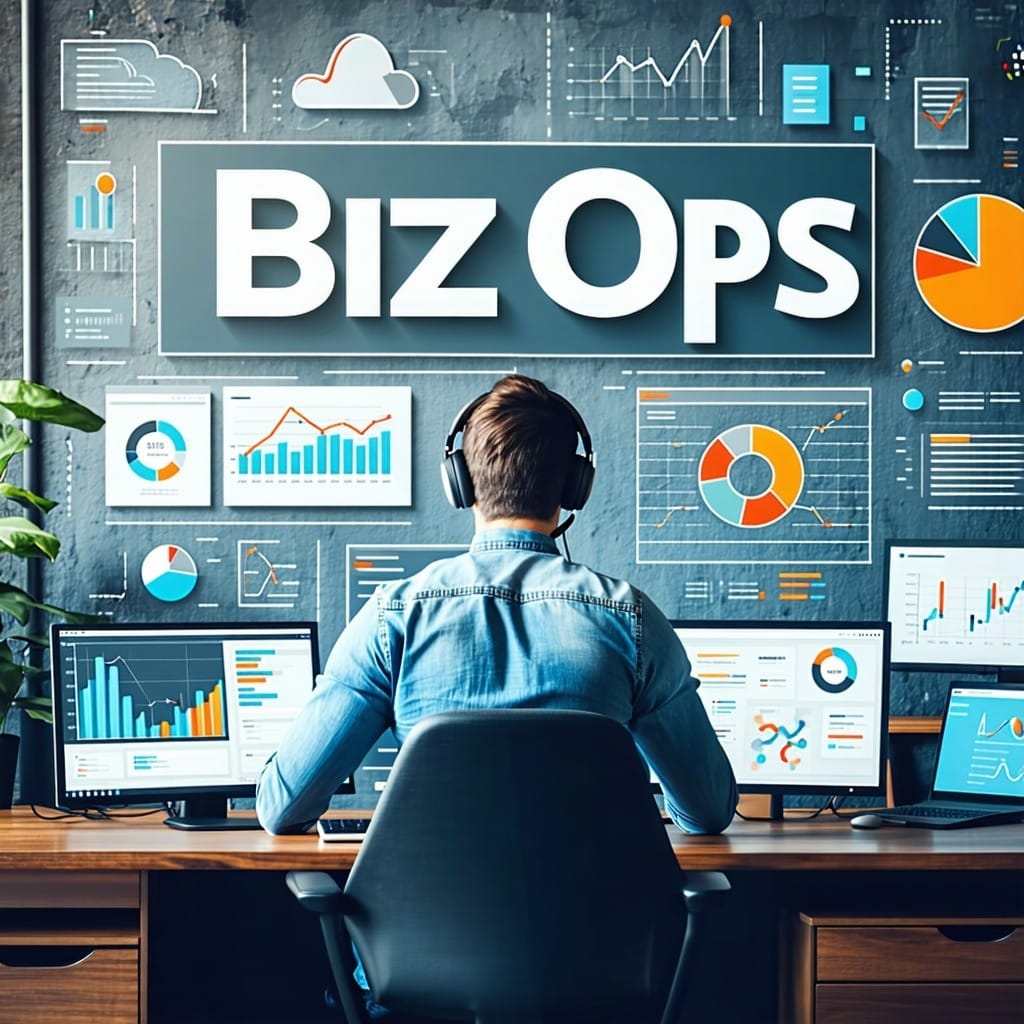What is BizOps: A Business Autopilot - Course Monster Blog

The first autopilot was launched in 1912, ushering in the age of long-distance air travel. The addition of gyroscopes and altitude indications to rudders helped aircraft to stay on course. Intelligent automation software now promises to similarly change a company by monitoring and automating important operations, allowing your firm to fly true without your entire attention.
What is BizOps?
BizOps combines business and IT operations by leveraging data to link business goals and KPIs to related IT operations and vice versa.
Assume you have a company aim of completing all orders within 24 hours. The “autopilot” will keep one eye on business events from the ordering and fulfillment processes. Its second eye will monitor IT events from the systems that are carrying out those procedures. With enough time, training, and data, your BizOps system can forecast when the 24-hour KPI will be missed, as well as why and how to improve.
This is not a novel idea. What’s new is how efficiently we can now put these aspects together, owing to the vast amounts of data created and recorded through digital transformation. “A lot of business is now done through IT,” Bailey explains. “Imagine physical banks transitioning to online banking and physical shops transitioning to e-commerce.” What about the aspects of the company that isn’t supported by IT? They’re probably managed by IT.”
Humans may be picking and packaging in warehouses, as Bailey states, but that labor is handled by IT. Each stage of any given end-to-end process is either implemented or managed by IT. And it is because IT systems are so involved that we have an unrivaled chance to collect data on business execution – a key step toward putting your firm on autopilot for competitive advantage.
Challenges of BizOps
However, one recurring issue remains: how can we combine business strategy with IT systems? How would it appear?
Bailey provides an e-commerce example: Let’s imagine your e-commerce site has an IT failure and you lose the payment procedure. However, you can still follow the person on the page, as well as what they are viewing and doing. You may also keep note of every missed payment request. From there, you may assess the impact of the outage on the company’s aim of selling a million dollars of items each hour. You are aware of how many payments have failed. You also know who the consumers who were affected are and what they were attempting to put in their carts.
You have two options at this point:
- Measure the impact on meeting the business goal: $300,000 in lost revenue.
- Distribute automation to impacted customers. For example, you may reach out to dissatisfied customers immediately with a discount voucher and a repopulated basket.
Everything could be done digitally. Impact analysis is entirely digital, utilizing observability technology. However, how you respond to the affected clients might be a combination of digital and human contact, with high-touch reserved for reenacting purchases for high-value customers.
From performance monitoring to predictive business benefits
For years, IT professionals have used application performance management tools to monitor, examine, and analyze data. These technologies may now be used in any business activity that utilizes IT. This not only gives us a better understanding of these separate processes. It uses data to connect the two areas so that managers may understand how changes in IT affect business goals and how IT may need to expand or evolve.
Assume you’re conducting a marketing campaign with the objective of increasing site traffic by 50% and increasing shopping conversion by 20%. Those business objectives must be translated into IT objectives. Perhaps the website should have 50% more capacity for requests and 20% more capacity for payments for those shopping conversions. You may also require more employee capacity for fulfillment.
If your company, like many others, has segregated IT and business departments that compete for resources, a BizOps strategy is welcome news. It implies that you’re all in this together.
Summary
You can monitor and gather data in every aspect of your organization as it digitally evolves. The goal of a BizOps approach is to connect these events from IT to business strategy. It’s a strong technique to produce happier consumers, and it’s a huge step toward enabling your firm to operate straight and true without your entire attention – like your business’s autopilot.
Here at CourseMonster, we know how hard it may be to find the right time and funds for training. We provide effective training programs that enable you to select the training option that best meets the demands of your company.
For more information, please get in touch with one of our course advisers today or contact us at training@coursemonster.com




Comments ()